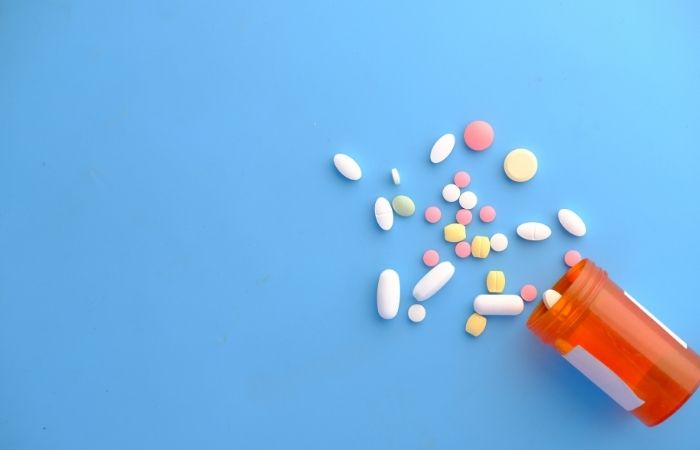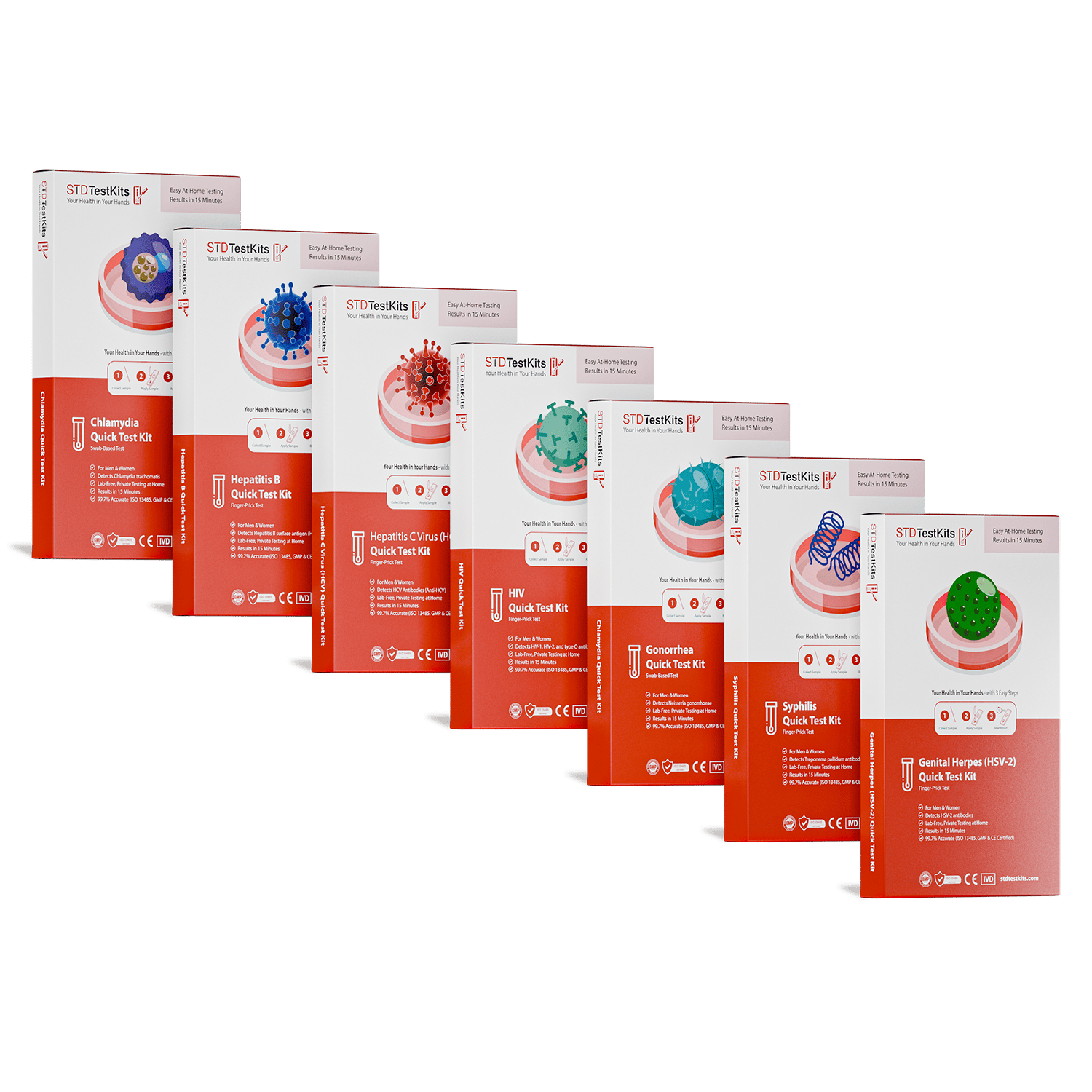Is Oral Sex Safe? Why You Can Still Catch STDs Without Penetration
Quick Answer: Gonorrhea is treated with a single intramuscular shot of ceftriaxone. Oral antibiotics like azithromycin are no longer first-line due to resistance. You may need additional pills if co-infections (like chlamydia) are suspected.
“They Gave Me a Shot in the Butt, Is That Normal?”
Marcus, 27, had gone to an urgent care after noticing unusual discharge and aching when he urinated. He expected a prescription. Instead, the nurse came in with a syringe. “Drop your pants,” she said, matter-of-factly. “It goes in the glute.” He blinked. “Wait, what?”
Yes, it’s normal. It’s the standard. The CDC’s current recommendation for uncomplicated gonorrhea is a single intramuscular injection of ceftriaxone, a broad-spectrum antibiotic that targets the bacteria aggressively and quickly. Oral regimens used to be more common, particularly azithromycin, but resistance has changed the game. Pills don’t work as well anymore, and partial treatment risks leaving the infection lurking, and evolving.
In Marcus’s case, the shot worked. His symptoms cleared in a few days. But if he’d refused it or walked away assuming he could treat himself later, he could’ve developed complications like pelvic inflammatory disease (PID) in a partner, or even gonorrheal arthritis in himself.
Why Pills Alone Often Aren’t Enough
There was a time when you could walk out of a clinic with two pills, azithromycin and cefixime, and be “cured” of gonorrhea. That’s no longer the case. According to updated CDC treatment guidelines, resistance to azithromycin is now widespread, and cefixime (an oral cephalosporin) is less effective in some anatomical sites like the throat or rectum.
The bacteria that causes gonorrhea, Neisseria gonorrhoeae, is smart. It evolves. It has, quite literally, learned to fight back against many antibiotics that once knocked it out. Today, oral-only regimens are reserved for rare situations when the shot isn’t an option. That could be due to allergy, access issues, or clinical judgment. But for most people, the injection is what works, and skipping it increases the risk of incomplete treatment.
Let’s break it down:
Table 1. Summary of current gonorrhea treatment options based on CDC guidance. Injection remains the most reliable method for complete eradication.

People are also reading: Condoms Cover Genitals, Not Everything Else: The Skin-to-Skin STD Problem
What If You’re Allergic to the Shot?
Let’s say you’re allergic to cephalosporins, the drug family that includes ceftriaxone. This happens. You’re not out of options. But your provider will need to make a very intentional plan based on your health history and the site of infection.
In some cases, oral doxycycline or gentamicin may be considered, but only with close monitoring and only when absolutely necessary. You should never self-substitute or decline treatment without understanding the full risk. Gonorrhea doesn’t just stay “down there.” It can spread into your bloodstream. It can affect your joints. And in people with vaginas, it can silently cause permanent fertility damage without dramatic symptoms.
This is why an experienced provider, and often a follow-up test, is essential.
Co-Infection Is Common, And Might Mean Extra Pills
Here’s the part no one tells you in TikTok comments or Reddit threads: many people who test positive for gonorrhea also have chlamydia. The two infections often travel together. That’s why some providers will prescribe a second antibiotic, often doxycycline, taken orally for 7 days, even if your gonorrhea test is the only one that came back positive.
Why? Because gonorrhea might’ve shown up faster on the test, or your chlamydia result is pending. Or maybe your partner tested positive for both. It’s easier (and safer) to treat both than risk a missed diagnosis. And while chlamydia is curable with oral meds alone, gonorrhea usually needs that injection first.
This combo approach is also why some people walk away with both a shot and a pill regimen, and then wonder if they were overtreated. You weren’t. You were protected.
If you’re unsure what you were given, don’t guess. Ask. Every reputable clinic will document what was administered, and if you used a telehealth service, they’ll provide a digital record. You’re not being difficult, you’re being responsible.
What to Expect After Treatment: From Shot to Symptom Relief
Daniela, 22, got the shot in the clinic’s back office. The nurse said it might sting, and it did. Daniela expected to feel fine within hours. But by the next morning, the discharge was still there. She panicked. Did the shot even work?
The answer is: it’s not instant. While ceftriaxone starts killing gonorrhea quickly, full symptom relief can take 2 to 5 days. Pain while urinating may linger. Discharge can taper slowly. Inflammation takes time to resolve, even after the bacteria is gone.
If you’re still having noticeable symptoms after 5 to 7 days, especially if they worsen or shift, that’s when you check back in. It could mean co-infection, resistant strain, or even re-exposure from an untreated partner. But the first few days? They’re part of the healing arc, not a failure.
And yes, it’s totally normal to feel anxious during this window. That “What if I still have it?” loop is brutal. You’re not alone. That’s why follow-up testing is often recommended, even when treatment is presumed successful.
How Long Until You’re Not Contagious?
This is one of the most searched, least clearly answered questions on the internet. So let’s get specific.
After the injection of ceftriaxone, most people are considered non-contagious within 24 to 48 hours if no sexual contact occurs and symptoms are resolving. But that doesn’t mean you're automatically in the clear to resume sex two days later.
Why? Because even if you feel fine, bacteria may still be present in small amounts, especially in the throat or rectum. And if your partner wasn’t treated, sex just bounces the infection back and forth.
The general rule: wait at least 7 days after treatment before resuming any sexual activity. That’s 7 full days, symptom-free, with all partners either treated or abstained. It’s not about punishment. It’s about precision. Gonorrhea can survive in asymptomatic tissue longer than people think.
Table 2. Timeline of gonorrhea clearance and sexual activity recommendations post-treatment.
What If You Still Have Symptoms After a Week?
There’s a sinking feeling that comes when you’ve followed instructions, taken your meds, waited the 7 days, and something still feels off. Maybe it’s slight discharge. Maybe the burning came back. Maybe it’s nothing, or maybe it’s a red flag.
Don’t guess. Don’t Google until 3AM and convince yourself it’s a “super strain.” Instead, take a breath and consider a few realities:
First, if your partner wasn't treated, reinfection is possible. It doesn’t mean the medication failed, it means the bacteria came back. Second, if symptoms are mild and new, they may be irritation from condoms, new soap, or post-infectious inflammation. Third, and rarely, treatment may not have worked fully, especially for oral or rectal infections that weren’t specifically tested.
This is where a retest matters. CDC guidance says that for people treated for gonorrhea, retesting should happen 3 months after treatment, even if no symptoms return. But if symptoms persist or come back within days or weeks, go sooner.
And no, you don’t need to be embarrassed. Most clinics have seen this pattern before. Many will prioritize your retest to make sure things are fully resolved. You deserve peace of mind, not endless uncertainty.
How to Talk to Your Partner, Without the Panic
Ty, 34, froze the moment he saw his positive result. Not because of the diagnosis, he knew he’d be fine, but because he didn’t know how to tell his boyfriend. Would it destroy their relationship? Would he get blamed? Would his partner accuse him of cheating?
If you’re feeling the same, tight chest, sweaty palms, you’re not alone. This is where shame tries to take the wheel. But here’s the truth: telling a partner about a treatable STD is not a confession of guilt, it’s a commitment to care.
Most people with gonorrhea don’t know they have it. It often presents with no symptoms. That means you could have been the one exposed, or the one who unknowingly passed it on. Either way, someone has to go first. Someone has to speak up. Let it be you.
If you need help, there are anonymous notification tools available. Services like TellYourPartner.org or even text-based scripts from Planned Parenthood can help you phrase it. Keep it simple: “Hey, I just tested positive for gonorrhea. You might want to get checked too.” You don’t owe a novel. Just honesty.
And if your partner gets angry? That’s about them, not the diagnosis. You did the right thing. And the faster you both get treated, the less likely this becomes an ongoing cycle of stress and secrecy.
This Isn’t the End, It’s a Turning Point
Rosa, 29, sat in her car after leaving the clinic, eyes still stinging. She had a printed aftercare sheet in one hand, a dull ache in her hip from the shot, and a spiral of self-blame that wouldn’t let up. “I’m disgusting,” she muttered under her breath. But she wasn’t. She was healing.
If you’ve just been diagnosed, you may feel like your world got smaller. Like everyone else is clean and you're marked. That shame? It doesn’t belong to you. It’s manufactured, by outdated sex ed, by moral panic, by silence.
Let’s get this straight: getting gonorrhea doesn’t make you reckless, dirty, or broken. It means you had sex, like most adults do, and got exposed to a very common bacteria. The cure exists. The problem is silence, not infection.
Use this moment to reset, not retreat. You’re allowed to feel your feelings. But also remember, this is the part where you get back in the driver’s seat.

People are also reading: How Safe Is Grinding? The STD Risk You Didn’t Think About
Prevention: It’s More Than Just Condoms
We hear it over and over: wear a condom. And yes, using a barrier lowers the chance of passing it on. But it doesn't get rid of it. Condoms don't completely protect against gonorrhea, so it can spread through skin-to-skin contact or through the throat during oral sex.
That's why testing regularly, having honest conversations, and knowing window periods are all part of prevention. People who have more than one partner or are in an open relationship often get tested every three to six months. And being honest with new partners doesn't ruin the mood; it builds trust.
Some STDs, like gonorrhea, can clear silently and come back later. That’s not about irresponsibility, it’s biology. But routine care puts you in control.
And yes, discreet home test kits exist for a reason. If going to a clinic is hard, or if you’d rather check privately, you can use a combo kit that checks for gonorrhea, chlamydia, and more.
Whether it’s a bump or a question mark, you deserve answers. And peace of mind is one test away.
When Should You Retest? The Long Game
You’ve been treated. Your symptoms are gone. Sex has resumed. Life moves on. But don’t skip this part, retesting matters.
Because gonorrhea doesn’t give you immunity. You can catch it again next month, next year, or even next week. According to the CDC, up to 1 in 5 people will get re-infected within 6 months after treatment. That’s not a failure, it’s a reality of how common and quiet the infection can be.
If you’re under 25, or have new/multiple partners, or didn’t confirm your partner was treated, mark your calendar for a follow-up. Typically, that’s:
Table 3. Retesting timelines based on post-treatment risk scenarios.
If you’re unsure whether it’s time, don’t wait for symptoms. Many cases of gonorrhea are silent, and doing nothing doesn’t equal being fine. Doing something equals staying safe.
You’re Still You
Take a breath. This diagnosis doesn’t define your worth, your future, or your desirability. You are not your test result. You are still worthy of care, pleasure, intimacy, and joy.
Let this article be your guide, not your punishment. The medical facts matter. But so does the emotional truth: most of us carry more shame about STDs than is ever warranted by the biology. Gonorrhea is just bacteria. Your body did nothing wrong. It just needs support. And now, you know exactly how to give it that.
FAQs
1. Is gonorrhea actually curable?
100%, yes. Gonorrhea is caused by a bacteria, not a virus, and bacteria can be killed. With the right antibiotic (usually a shot of ceftriaxone), it clears up fast. What’s tricky is catching it early and making sure your partner gets treated too. Otherwise, it can boomerang right back to you.
2. So… do I really need a shot in the butt?
Probably, yes. It’s not about punishment, it’s just the most effective way to get the medication in fast and deep where it works best. The shot stings for a second. What hurts more is untreated gonorrhea wrecking your reproductive system. You’ll be in and out before you finish your panic-scroll.
3. Can I just take pills instead?
Not usually. The CDC doesn’t recommend oral-only treatment anymore because gonorrhea has gotten smart. It resists pills like azithromycin now. The injection is the gold standard. Some people get pills too, usually to cover chlamydia, which often tags along silently, but they’re not a substitute.
4. How soon will my symptoms go away?
Most people feel better within 2 to 5 days. Burning fades. Discharge dries up. But don’t expect magic overnight. Your body’s been fighting an infection, let it rest. And if things still feel off after a week? Call the clinic. You might need a retest or a deeper look.
5. What if I feel fine, do I still need to tell my partner?
Yes. Gonorrhea can be symptomless, but still spread. If you tested positive, it didn’t come out of thin air. That awkward convo might save your partner from infertility or painful complications. If saying it directly feels hard, try an anonymous text tool like TellYourPartner.org.
6. Can I have sex again right after the shot?
Slow down, friend. You’re still contagious for a bit. Wait 7 full days after treatment, and only if your partner was treated too. Even if you’re symptom-free, bacteria can linger. Nobody wants a round-two of this.
7. What if I got treated but still have symptoms?
First, take a breath. There are a few possible reasons: maybe your partner wasn’t treated and you got reinfected, maybe there’s another infection in the mix, or maybe you’re reacting to something else entirely (like a new lube or soap). Either way, don’t self-diagnose. Go back and get checked again.
8. Is it true you can get gonorrhea in your throat?
Oh yes, and many people do. Oral sex can transmit gonorrhea to the throat, and you might not even notice. It’s one reason regular testing matters. Clinics can swab your throat and rectum too, not just your genitals. And yes, the throat version still needs treatment.
9. Do at-home test kits for gonorrhea actually work?
Yes, if you get them from a reputable source. They check for gonorrhea using urine or swab samples and give results quickly. If you’re not ready to visit a clinic, or just want privacy, you can test at home and follow up if it’s positive.
10. Will people judge me for having gonorrhea?
Not the right ones. Anyone who shames you over a treatable STI isn’t worth your time. The people who matter? They’ll respect you more for taking care of your health and being honest. We don’t shame people for getting the flu, why should this be any different?
You Deserve Answers, Not Assumptions
Getting a positive result can flip your whole emotional world upside down, but it doesn’t have to stay that way. You now know that gonorrhea is curable, that a shot is often the most effective treatment, and that following through means protecting not just your own health, but the people you care about too.
If you’re ready to take control, clarity is just a click away. This discreet combo test kit lets you screen for gonorrhea and other common STDs from home, no awkward questions, no waiting rooms, just peace of mind at your pace.
How We Sourced This Article: We combined current guidance from leading medical organizations with peer-reviewed research and lived-experience reporting to make this guide practical, compassionate, and accurate.
Sources
1. Planned Parenthood – Gonorrhea Info
3. Gonococcal Infections Among Adolescents and Adults – CDC Treatment Guidelines
4. Clinical Treatment of Gonorrhea – CDC
5. Update to CDC’s Treatment Guidelines for Gonococcal Infections – MMWR
6. Management of Neisseria gonorrhoeae in the United States – Barbee et al.
7. Neisseria gonorrhoeae Antimicrobial Resistance: The Future of Gonorrhea Treatment – PMC
8. Antibiotic Resistance in Neisseria gonorrhoeae: Origin, Evolution, and Future – PMC
About the Author
Dr. F. David, MD is a board-certified infectious disease specialist focused on STI prevention, diagnosis, and treatment. He blends clinical precision with a no-nonsense, sex-positive approach and is committed to expanding access for readers in both urban and off-grid settings.
Reviewed by: L. Reyes, RN, MPH | Last medically reviewed: November 2025
This article is for informational purposes and does not replace medical advice.







